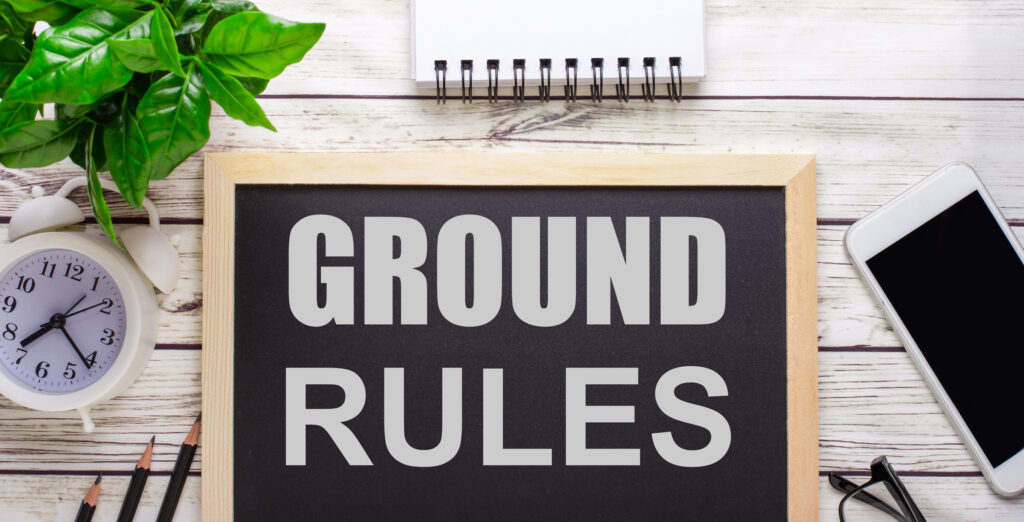If there were commandments for real estate sales professionals, “If You Are Not Asking a Question, You Should Not be Talking” would be the first. To successfully sell real estate, you must master the art -and science- of asking questions in all their forms.
Open-Ended vs. Closed-Ended Questions
There are two types of questions: open-ended and closed-ended. Open-ended questions begin with what, who, when, where, how, and why. They compel the mind of the person being questioned to search for an answer and respond in complete sentences.
Closed-ended questions have simple binary answers, such as yes or no, number 1 or 2, green or red. They are answered with little thought and, unfortunately for us, salespeople, often in the negative. This is because it is the mind’s natural tendency to protect itself from any demands it would prefer not to handle, and a “no” is an effective way to shut down any further inquiry.
To better understand the difference, compare “Who do you know that might want to buy or sell real estate in the next twelve months?” vs. “Do you know anybody who might want to buy or sell real estate in the next 12 months?” The first question causes the mind to search for an answer, while the second gives it an easy out, like a coin flip.
Open-Ended Questions
Open-ended questions establish rapport with prospects, help you understand how they view your role in their real estate pursuits, help them figure out what they want to accomplish, and shed light on how you can best help them reach their goals.
Open-ended questions are categorized based on their purpose. They are:
- Rapport-building questions
- Qualifying questions
- Diagnostics questions
Rapport-building questions aim to find a commonality between you and your prospect, a shared trait or interest that creates a bond and seeds a potential relationship. Examples are:
- Where are you from?
- What’s your Alma Mater?
- How many children do you have?
- Did you watch that game?
Qualifying questions are questions of fact.
- How would you describe your current home?
- When did you buy it?
- How was the process?
- Did you use an agent?
- What is prompting your move?
Qualifying questions do several things:
- Get your prospect comfortable answering your questions because the answers are known. They involve no guessing or decision-making.
- Reveal your prospect’s attitudes, expectations, and hot buttons vis-a-vis the home buying or selling processes and the role of agents.
- Allow you to assess if the prospect is ready, willing, and able to buy or sell.
- Help you determine if you want to work with the prospect.
Diagnostics questions are used to understand the needs –perceived and actual– of the prospects. Some examples are:
- “How many bedrooms and baths do you need?” “
- “How frequently do you entertain?” “
- “How far are you willing to drive?” “
- “When would you want to move?” “
- “Where are you moving to?”
When working with sellers, most diagnostics questions are about the seller’s motivation. When working with buyers, they are about motivation, lifestyle, and the characteristics of the home sought.
It’s essential not to take the answers to diagnostic questions at face value. The need for three bedrooms may instead be the need for one bedroom and two offices, while the desire to move at the end of summer may change following a review of the timeline for selling and moving. Ask the same questions in different ways to test assumptions, work through some reality checks, and ensure that partners disclose their likes and dislikes. The latter will go a long way in avoiding last-minute surprises.
Closed-Ended Questions
Closed-ended questions help you shepherd the prospect to and through decision points. Think of them as forks in the road of the prospect’s mind and use them only to help them choose the right or left path. This is necessary when you are:
- Closing.
- Handling objections.
- Framing a solution.
“Should we go back to the office and write an offer?” is a closing question, while “Won’t it be great to be close to your grandkids?” or “Selling the house and buying a condo would allow you to travel a lot more, right?” might both be used to handle a “list now” objection.
“Did you prefer the first or second house?” is a solution-framing question. While the question doesn’t call for a yes or no answer, it is a binary question in which the customer must choose one of two possible answers.
Closed-ended questions are used sparingly. If you have paid attention to the answers to your open-ended questions, you will know in advance what the answers to your closed-ended questions will be, and you will ask them only to help your customers make decisions throughout the process.
In Summary
Questions should make up the bulk of your side of the conversation. When not asking them, you should actively listen to the answers and delve deeper into your customers’ psyche by asking the next naturally flowing question. Open-ended questions help you understand your customers, and closed-ended questions allow you to guide your customers through decision points.
So, start honing your questioning skills today. Do it with everyone you come across, in and outside of work. Practice and repetition will save you time in the long run and render you more effective throughout the sale cycle.
If you have questions about honing your questioning skills, don’t hesitate to call or text 239-220-1018.








